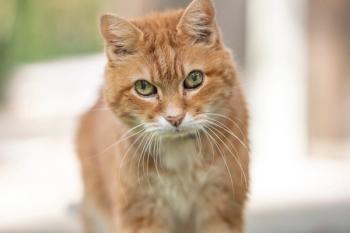
- dvm360 January 2020
- Volume 51
- Issue 1
Surgery STAT: Local anesthetic use in spays and neuters
Adding locoregional anesthetics into routine ovariohysterectomy and orchiectomy protocols is a rapid, safe and inexpensive way to enhance pain control for our veterinary patients.
Multimodal pain control through the use of local anesthetics is a simple and inexpensive way to help control postoperative pain. Locoregional blocks performed during routine procedures such as ovariohysterectomies and orchiectomies are an effective way to help control pain at the level of the surgical site and improve patient outcomes.
Common locoregional blocks used for gonadectomy procedures include the intratesticular (IT) block for orchiectomies, and the intraperitoneal block (IP) and the splash block (a variation of the IP block) for ovariohysterectomies.
Locoregional blocks prevent transmission of nociceptive input, and provide an important component of multimodal analgesia. Decreased pain scores have been appreciated in multiple studies evaluating IP bupivacaine administration in both dogs and cats, as well as reduced requirements for rescue analgesia.1 During castration, the use of IT blocks results in similarly decreased pain scores and analgesia needs.2 Lower postoperative cortisol levels have been identified after IT blocks2 and with IP bupivacaine in dogs undergoing laparoscopic ovariohysterectomy.3 Lastly, decreased heart rate and mean arterial pressure were identified in patients that received IT lidocaine,4 suggesting a decreased response to surgical stimulation that may allow for less anesthetic gas, and therefore decrease the cardiovascular side effects of inhalant anesthesia.
Here's how to perform the IT block, the IP block and the splash block:
Intratesticular block
For IT blocks, we recommend bupivacaine (0.5%) at 1 mg/kg for dogs and cats; the volume may be reduced as needed to avoid testicular distention. Bupivacaine has an onset time of 20 to 30 minutes and duration ranging from three to 10 hours. Here's the process:
Clip and scrub the scrotal and periscrotal region for orchiectomy. This block can be performed before the final scrub to allow time to take effect.
Prepare the local anesthetic in a syringe using a 22-ga needle (25-ga for small dogs and cats).
Using examination gloves, hold the testicle in one hand. Advance the needle into the center of the testicle.
Aspirate to ensure no blood is obtained, and inject half of the anesthetic drug directly into the testicle.2 (See Figure 1.) Repeat on the second testicle.
Allow time for diffusion of the block to reach the spermatic cord.
Figure 1: An intratesticular block is administered to an anesthetized patient preoperatively. (Photos courtesy of Drs. Sarah Schock and Stephanie Shaver.)
Intraperitoneal block
For an IP block, we recommend bupivacaine (0.5%) at 3 mg/kg for dogs and 2 mg/kg for cats. Follow these steps:
Using aseptic technique, prepare the local anesthetic in a sterile syringe.
After completion of the ovariohysterectomy and prior to complete closure of the linea alba, gently lift the cranialmost aspect of the incision with a spay hook and insert the syringe into the peritoneal cavity (see Figure 2).
Instill the local anesthetic into the peritoneal cavity.
Finish closing the linea alba and remaining incision. The use of additional incisional blocks in the subcutaneous tissue of the incision in one recent study did not show a decrease in postoperative pain scores.5
Figure 2: A spay hook is used to elevate the body wall to provide access for an intraperitoneal block after ovariohysterectomy.
Splash block
For splash blocks, we recommend bupivacaine (0.5%) at 3 mg/kg for dogs and 2 mg/kg for cats.
Prepare as for the IP block.
Upon completion of the ovariohysterectomy, instill about a third of the local anesthetic directly onto each ovarian pedicle and uterine stump, applying equal volumes to each site. This is a more directed technique than the intraperitoneal block.
Variations include instilling the local anesthetic into the peritoneal space around the right and left ovarian pedicle and caudal uterus several minutes prior to starting the ovariohysterectomy. This technique was successful in cats given bupivacaine (0.25%) at 2 mg/kg.6
Conclusion
Adding locoregional anesthetics into routine ovariohysterectomy and orchiectomy protocols is a rapid, safe and inexpensive way to enhance pain control for our veterinary patients. A multimodal approach to postoperative pain control through the use of local blocks is technically achievable and easy to incorporate into daily practice.
References
1. Campagnol D, Teixeira-Neto FJ, Monteiro ER, et al. Effect of intraperitoneal or incisional bupivacaine on pain and the analgesic requirement after ovariohysterectomy in dogs. Vet Anaesth Analg 2012; 39(4):426-30.
2. Perez TE, Grubb TL, Greene SA, et al. Effects of intratesticular injection of bupivacaine and epidural administration of morphine in dogs undergoing castration. J Am Vet Med Assoc 2013; 242(5):631-42.
3. Kim YK, Lee SS, Suh EH, et al. Sprayed intraperitoneal bupivacaine reduces early postoperative pain behavior and biochemical stress response after laparoscopic ovariohysterectomy in dogs. Vet J 2012;191:188-192.
4. Huuskonen V, Hughes JM, Estaca Bañon E, et al. Intratesticular lidocaine reduces the response to surgical castration in dogs. Vet Anaesth Analg 2013; 40(1):74-82.
5. Kalchofner G, Campagna I, Bruhl-Day R, et al. Intraperitoneal bupivacaine with or without incisional bupivacaine for postoperative analgesia in dogs undergoing ovariohysterectomy. Vet Anaesth Analg 2016; 43:571-578.
6. Benito J, Monteiro B, Lavoie AM, et al. Analgesic efficacy of intraperitoneal administration of bupivacaine in cats. J Fel Med Surg 2016; 18 (11):906-912.
Dr. Stephanie Shaver
Dr. Sarah SchockDr. Sarah Schock is a small animal surgical intern at Midwestern University in Glendale, Arizona. In her free time, she enjoys running, riding horses and spending time with friends, family and her two cats. Dr. Stephanie Shaver is an ACVS-board-certified veterinary surgeon and assistant professor of small animal surgery at Midwestern University. She enjoys hiking, travel, friends, family and teaching veterinary students.
Surgery STAT is a collaborative column between the American College of Veterinary Surgeons (ACVS) and dvm360 magazine. To locate a diplomate, visit ACVS's
Articles in this issue
about 5 years ago
New cancer screening test for dogs now availablealmost 6 years ago
The next recession is coming. Here’s what to do nowalmost 6 years ago
Women’s veterinary leadership group names new presidentalmost 6 years ago
A refuge from violence for pets and peoplealmost 6 years ago
Managing recurrent UTIs in petsalmost 6 years ago
An update on tick control from Michael Dryden at Fetch dvm360about 6 years ago
A DVM at the DMVabout 6 years ago
Florida names new interim veterinary school deanabout 6 years ago
The ABCs of veterinary dentistry: U is for ulcers—what a pain!about 6 years ago
dvm360's top news stories of 2019Newsletter
From exam room tips to practice management insights, get trusted veterinary news delivered straight to your inbox—subscribe to dvm360.





